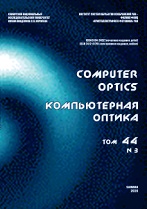|
This article is cited in 15 scientific papers (total in 15 papers)
IMAGE PROCESSING, PATTERN RECOGNITION
Development of vector algorithm using CUDA technology for three-dimensional retinal laser coagulation process modeling
A. S. Shirokanevab, N. A. Andriyanovc, N. Yu. Ilyasovaab
a Samara National Research University, 443086, Samara, Russia, Moskovskoye Shosse 34
b IPSI RAS – Branch of the FSRC "Crystallography and Photonics" RAS, 443001, Samara, Russia, Molodogvardeyskaya 151
c Financial University under the Government of the Russian Federation, 125167, Moscow, Russia, Leningradskii prospekt 49
Abstract:
For diabetic retinopathy treatment, laser coagulation is used in modern practice. During the laser surgery process, the parameters of laser exposure are selected manually by a doctor, which requires the doctor to have sufficient experience and knowledge to achieve a therapeutic effect. On the basis of mathematical modeling of the laser coagulation process, it is possible to estimate the crucial parameters without performing an operation. However, the retina has a rather complex structure, and when even low-cost numerical methods are used for modeling, it takes a long time to obtain a result. In this regard, the development of time-efficient algorithms for three-dimensional modeling is an urgent task, since the use of such algorithms will provide a compre-hensive study within a limited time.
In this paper, we study the execution time of algorithms that implement various variations in the application of the splitting method and the finite difference method, adapted to the set problem of heat conduction. The study reveals the most efficient algorithm, which is then vectorized and implemented using the CUDA technology. The study was carried out using Intel Core i7-10875H and Nvidia RTX 2080 MAX Q and showed that an analog of the vector algorithm, focused on solving a multidimensional heat conduction problem, provides an acceleration of no more than 1.5 times compared to the sequential version. The developed vector-based algorithm, focused on the application of the sweep method in all directions of the three-dimensional problem, significantly reduces the time spent on copying into the memory of the video card and provides a 40-fold acceleration in comparison with the sequential three-dimensional modeling algorithm. On the basis of the same approach, a parallel algorithm of mathematical modeling was developed, which provided a 20-fold acceleration at full processor load.
Keywords:
diabetic retinopathy, laser coagulation, mathematical modeling, heat conduction equation, parallel algorithms, vector algorithms, CUDA.
Received: 02.11.2020
Accepted: 09.03.2021
Citation:
A. S. Shirokanev, N. A. Andriyanov, N. Yu. Ilyasova, “Development of vector algorithm using CUDA technology for three-dimensional retinal laser coagulation process modeling”, Computer Optics, 45:3 (2021), 427–437
Linking options:
https://www.mathnet.ru/eng/co926 https://www.mathnet.ru/eng/co/v45/i3/p427
|

| Statistics & downloads: |
| Abstract page: | 164 | | Full-text PDF : | 43 | | References: | 24 |
|




 Contact us:
Contact us: Terms of Use
Terms of Use
 Registration to the website
Registration to the website Logotypes
Logotypes








 Citation in format
Citation in format 
